 W
WLa abadía del crimen is a video game written by Paco Menéndez with graphics made by Juan Delcán and published in 1987 by Opera Soft. It was conceived as a version of Umberto Eco's book The Name of the Rose. Paco Menéndez and Opera Soft were unable to secure the rights for the name, so the game was released as La abadía del crimen. "The Abbey of Crime" was the working title of the novel The Name of the Rose.
 W
WAcademy is an action/simulation video game for the Commodore 64, MS-DOS, ZX Spectrum, Amstrad CPC, and Amiga It was released in 1986 by the CRL Group. It is the sequel to Tau Ceti and written by the same author, Pete Cooke.
 W
WAce is a combat flight simulator video game published for the Commodore 64, VIC-20, and Plus/4 in 1985 by Cascade Games. It was ported to the Amstrad CPC, Amstrad PCW, Amiga, and ZX Spectrum.
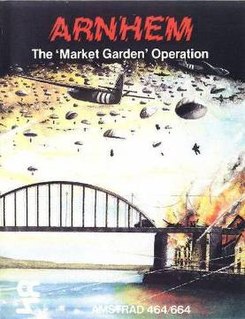 W
WArnhem: The 'Market Garden' Operation is a battle strategy game by CCS. It was released for the ZX Spectrum and Amstrad CPC in 1985, the Amstrad PCW in 1987, the MS-DOS in 1988, and for the Amiga in 1991.
 W
WBatman is a 1986 3D isometric action-adventure game by Ocean Software for the Amstrad PCW, Amstrad CPC, ZX Spectrum, and MSX, and the first Batman game developed. The game received favourable reviews. An unrelated Batman game was released two years later, titled Batman: The Caped Crusader.
 W
WBatman is an action video game developed and published by Ocean Software based on the 1989 film of the same name. It was released in 1989 for the Amiga, Amstrad CPC, Atari ST, Commodore 64, MS-DOS, MSX and ZX Spectrum.
 W
WBatman is an action video game developed and published by Ocean Software based on the 1989 film of the same name. It was released in 1989 for the Amiga, Amstrad CPC, Atari ST, Commodore 64, MS-DOS, MSX and ZX Spectrum.
 W
WBlagger is a platform game created by Antony Crowther for the Commodore 64 and released by Alligata in 1983. A BBC Micro port was released the same year, Acorn Electron, Amstrad CPC and MSX in 1984, Commodore 16 and Plus/4 in 1985 and Amstrad PCW in 1987. In some countries this game was released under the name Gangster.
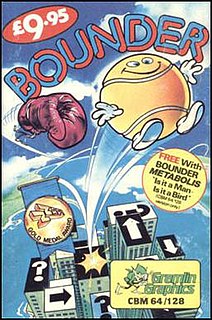 W
WBounder is a 1985 action game published by Gremlin Graphics in which the player navigates a variety of courses as a bouncing tennis ball.
 W
WColossus Chess is a series of chess-playing computer programs developed by Martin Bryant, commercially available for various home computers in the 1980s.
 W
WCorruption is an interactive fiction game by Magnetic Scrolls released in 1988. In this game, a successful stockbroker suddenly finds himself embroiled in a world of crime and danger.
 W
WCountdown to Doom is a text adventure game written by Peter Killworth for the BBC Micro and published by Acornsoft in 1982. It is set on the planet Doomawangara, which is coyly shortened to "Doom". An Acorn Electron version was released in 1984 but only as a ROM cartridge for the Plus 1 expansion. This was the only game released exclusively as a ROM cart for the Electron. There are two sequels, both published by Topologika: Return to Doom and Last Days of Doom.
 W
WEnchanter is a 1983 interactive fiction video game written by Marc Blank and Dave Lebling and published by Infocom. The first fantasy game published by Infocom after the Zork trilogy, it was originally intended to be Zork IV. The game has a parser that understands over 700 words, making it the most advanced interactive fiction game of its time. It was Infocom's ninth game.
 W
WFairlight is an isometric projection arcade adventure video game developed by Bo Jangeborg and Jack Wilkes at The Edge and released in 1985. Developed in seven months, Jangeborg created the GRAX game engine using some prior code and components from his earlier project, graphics package The Artist. Wilkes contributed art assets towards the game, including enemy sprites and the title screen. The game was well received critically and commercially, selling over 50,000 copies; a sequel Fairlight II was released in 1986.
 W
WFairlight II: A Trail of Darkness is an isometric 3D arcade adventure game released by The Edge in 1986 for the Sinclair ZX Spectrum but not Commodore 64 again. It is the sequel to Fairlight.
 W
WFish! is a text adventure game by Magnetic Scrolls released in 1988. The game was designed by John Molloy, Phil South and Peter Kemp with contributions by Rob Steggles.
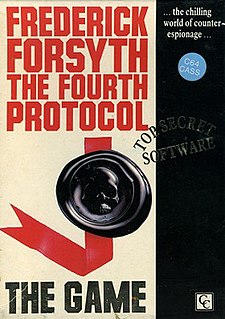 W
WThe Fourth Protocol is an interactive fiction video game based on Frederick Forsyth's 1984 spy novel The Fourth Protocol. The game was released in 1985 by Hutchinson Computer Publishing, a subsidiary of the publishing house Hutchinson. It was designed by John Lambshead and Gordon Paterson, and programmed by Ben Notarianni, Rupert Bowater and Paul Norris of the Electronic Pencil Company. The game was released for the ZX Spectrum in July 1985, with the Commodore 64 release following one month later, and the Amstrad CPC conversion in 1986.
 W
WFun School is a series of educational packages developed and published in the United Kingdom by Europress Software, initially as Database Educational Software. The original Fun School titles were sold mostly by mail order via off-the-page adverts in the magazines owned by Database Publications. A decision was made to create a new set of programs, call the range Fun School 2, and package them more professionally so they could be sold in computer stores around the UK. Every game comes as a set of three versions, each version set to cater for a specific age range.
 W
WGnome Ranger is a text adventure game by Level 9 released in 1987. It was followed by a sequel titled Ingrid's Back.
 W
WGraham Gooch's Test Cricket is a 1985 cricket game released for the Acorn Electron, BBC Micro, Commodore 64 and ZX Spectrum by Audiogenic. It was later reissued by budget label Alternative Software as Graham Gooch's Match Cricket.
 W
WThe Guild of Thieves is an interactive fiction game by Magnetic Scrolls first published by Rainbird in 1987. The game takes place in Kerovnia like the previous game The Pawn.
 W
WHead Over Heels is an action-adventure video game, released by Ocean Software in 1987 for several 8-bit home computers, and subsequently ported to a wide range of formats. The working title for the game was Foot and Mouth. It uses an isometric engine that is similar to the Filmation technique first developed by Ultimate.
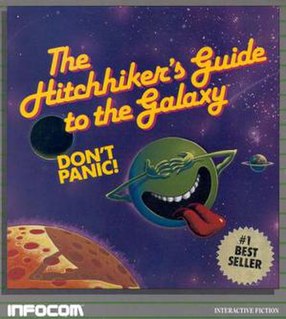 W
WThe Hitchhiker's Guide to the Galaxy is an interactive fiction video game based on the comedic science fiction series of the same name. It was designed by series creator Douglas Adams and Infocom's Steve Meretzky, and it was first released in 1984 for the Apple II, Macintosh, Commodore 64, CP/M, MS-DOS, Amiga, Atari 8-bit family, and Atari ST. It is Infocom's fourteenth game.
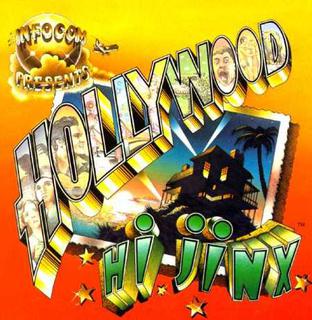 W
WHollywood Hijinx is an interactive fiction computer game written by Dave Anderson and Liz Cyr-Jones and published by Infocom in 1986. The game was released for the Apple II, Atari 8-bit family, Atari ST, Amstrad CPC, Amstrad PCW, Commodore 64, Amiga, TI-99/4A, and MS-DOS. It was Infocom's twenty-third game.
 W
WGnome Ranger II: Ingrid's Back is a text adventure game by Level 9 released in 1988. It is the sequel to Gnome Ranger The game is a standard text adventure with limited graphics on some platforms. Again, a short novella by Peter McBride is included explaining the background to the story and providing hints for play.
 W
WJewels of Darkness is a trilogy of text adventure games by Level 9. The individual games were initially released separately in 1983. They featured some themes and names inspired by the books of J. R. R. Tolkien and so became known as the Middle-Earth Trilogy. The individual releases were available for the BBC Micro unlike the compilation.
 W
WJinxter is an interactive fiction video game developed by Magnetic Scrolls and published by Rainbird in 1987 for 8-bit and 16-bit home computers of the time. Jinxter tells the story of a man on a mission to save the fictional land of Aquitania from the looming threat of evil witches. The game was well received by critics upon its release.
 W
WLancelot is a text adventure game by Level 9 released in 1988. It features static graphics on some platforms. The plot focuses on Lancelot's quest to find the Holy Grail.
 W
WThe Last Mission is a computer game released in 1987 by the Spanish company Opera Soft, for the Sinclair Spectrum, Amstrad CPC, and MSX. It was also ported to the IBM PC platform. It is a 2D flip-screen side-view game.
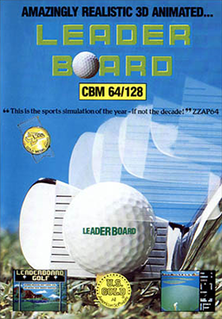 W
WLeader Board is a series of golf simulation video games that was developed by Bruce Carver and Roger Carver, and published by Access Software.
 W
WLeather Goddesses of Phobos is an interactive fiction video game written by Steve Meretzky and published by Infocom in 1986. It was released for the Amiga, Amstrad CPC, Amstrad PCW, Apple II, Macintosh, Atari 8-bit family, Atari ST, Commodore 64, TI-99/4A and MS-DOS. The game was Infocom's first "sex farce", including selectable gender and "naughtiness"—the latter ranging from "tame" to "lewd". It was one of five top-selling Infocom titles to be re-released in Solid Gold versions. It was Infocom's twenty-first game.
 W
WLord of the Rings: Game One is a computer game released in 1985 and based on the book The Fellowship of the Ring, by J. R. R. Tolkien. It was the follow-up to the 1982 game The Hobbit, but did not reach the same level of critical and commercial success as its predecessor. It's generally considered inferior by the gaming community, with many complaining about the removal of the real-time aspects and complex AI patterns of the previous game, and puzzles that lacked coherent solutions.
 W
WLords of Time is an interactive fiction computer game designed by Sue Gazzard and released by Level 9 Computing in 1983. Originally purely a textual adventure for 8-bit microcomputers, the game was later released as part of the Time and Magik compilation where graphics were added for all floppy disk versions. Like all Level 9 adventures of its time, it was written in the in-house A-code language which was platform-independent.
 W
WThe Lurking Horror is an interactive fiction game released by Infocom in 1987. The game was written by Dave Lebling and inspired by the horror fiction writings of H. P. Lovecraft. The original release was for MS-DOS, Apple II, Atari ST, Atari 8-bit family, and Commodore 64. It was Infocom's 26th game and the only in the horror genre. Infocom rated it as "Standard" in terms of difficulty. Later, it was ported to the Amiga with the addition of sound effects, making it the first Infocom adventure with that feature.
 W
WMatch Day II is a football sports game part of the Match Day series released for the Amstrad CPC, Amstrad PCW, ZX Spectrum, MSX and Commodore 64 platforms. It was created in 1987 by Jon Ritman with graphics by Bernie Drummond and music and sound by Guy Stevens.
 W
WMindfighter is a text adventure game developed by British studio Abstract Concepts and published by Activision in 1988 for the Amiga, Commodore 64, Amstrad CPC, Amstrad PCW, Atari ST, MS-DOS, and the ZX Spectrum computers.
 W
WThe Pawn is an interactive fiction game for the Sinclair QL written by Rob Steggles of Magnetic Scrolls and published by Rainbird in 1985. In 1986, graphics were added and the game was released for additional home computers.
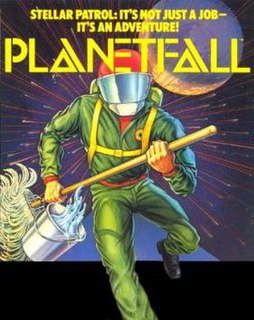 W
WPlanetfall is a science fiction themed interactive fiction video game written by Steve Meretzky, and the eighth title published by Infocom in 1983. The original release included versions for Apple II, Atari 8-bit family, TRS-80, and IBM PC compatibles. The Atari ST and Commodore 64 versions were released in 1985. A version for CP/M was also released. Although Planetfall was Meretzky's first title, it proved one of his most popular works and a best-seller for Infocom; it was one of five top-selling titles to be re-released in Solid Gold versions including in-game hints. Planetfall uses the Z-machine originally developed for the Zork franchise and was added as a bonus to the "Zork Anthology".
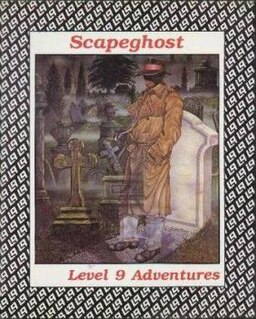 W
WScapeghost is an text adventure published by Level 9 Computing in 1989. It was the last text adventure game released by the company.
 W
WSilicon Dreams is a trilogy of interactive fiction games developed by Level 9 Computing during the 1980s. The first game was Snowball, released during 1983, followed a year later by Return to Eden, and then by The Worm in Paradise during 1985. The next year they were vended together as the first, second and last of the Silicon Dreams. Early advertisements gave it the title of Silicon Dream, but it was pluralised later.
 W
WSorcerer is an interactive fiction video game written by Steve Meretzky and released by Infocom in 1984. It is the second game in the magic-themed "Enchanter trilogy", preceded by Enchanter and followed by Spellbreaker. It is Infocom's eleventh game.
 W
WSouthern Belle is a train simulation video game published by Hewson Consultants in 1985. Southern Belle was unique at the time of release in that it was the first 3D steam train simulator available for home computers. The game allows the user to take over the fireman and/or driver duties on a King Arthur class passenger steam locomotive on the London to Brighton line.
 W
WStarglider is a 3D video game published in 1986 by Rainbird. It was developed by Jez San under his company name Argonaut Software. The game is a fast-moving, first-person combat flight simulator, rendered with colourful wireframe vector graphics inspired by San's love of the 1983 Atari coin-op Star Wars.
 W
WSuspect is an interactive fiction video game designed by Dave Lebling and published by Infocom in 1984. It is the third and last murder mystery Infocom released. It was written in highly portable ZIL and released for Amiga, Amstrad CPC, Amstrad PCW, Apple II, Atari 8-bit family, Atari ST, Commodore 64, Kaypro II, Macintosh, and MS-DOS. It is Infocom's fifteenth game.
 W
WTau Ceti is a video game published in 1985 by CRL for the ZX Spectrum and converted to the Amstrad CPC, Amstrad PCW, Atari ST, Commodore 64, and MS-DOS. It was designed and programmed by Pete Cooke. The world, set on Tau Ceti III orbiting Tau Ceti, is displayed using 3D graphics with shadow effects. The planet has a day and night cycle.
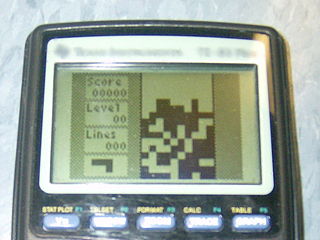 W
WThis is a list of variants of the game Tetris. It includes officially licensed Tetris sequels, as well as unofficial clones.
 W
WTime and Magik is a trilogy of interactive fiction games by Level 9. The individual games were initially released separately in 1983-1986. In 1988 the three games were revised, expanded and re-released together as a compilation by Mandarin Software, a division of Europress Software.
 W
WTomahawk is a 1985 video game published by Datasoft.
 W
WWishbringer: The Magick Stone of Dreams is an interactive fiction video game written by Brian Moriarty and published by Infocom in 1985. It was intended to be an easier game to solve than the typical Infocom release and provide a good introduction to interactive fiction for inexperienced players, and was very well received.
 W
WThe Witness is an interactive fiction video game published by Infocom in 1983. Like Infocom's earlier title Deadline, it is a murder mystery. The Witness was written in the ZIL language for the Z-machine, which allowed it to be released simultaneously on many systems. It is Infocom's seventh game.